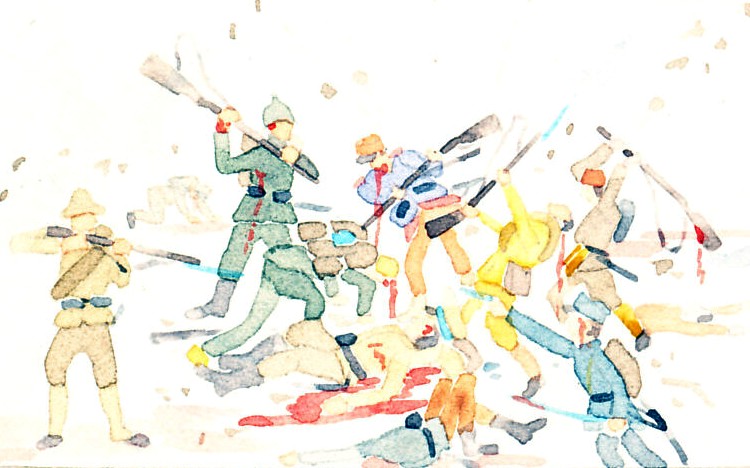Postwar postcard map of the Balkans including Albania, newly-created Yugoslavia, expanded Romania, and diminished former Central Powers Bulgaria and Turkey. The first acquisitions of Greece in its war against Turkey are seen in Europe where it advanced almost to Constantinople, in the Aegean Islands from Samos to Rhodes, and on the Turkish mainland from its base in Smyrna. The Greco-Turkish war was fought from May 1919 to 1922. The positions shown held from the war's beginning to the summer of 1920 when Greece advanced eastward. Newly independent Hungary and Ukraine appear in the northwest and northeast.

Péninsule des Balkans
Échelle 1:12.000.000
Petit Atlas de Poche Universel
25 Édition Jeheber Genève
Reverse:
No. 20 Édition Jeheber, Genève (Suisse)
Balkans
Roumanie
(Royaume.)
Superficie . . . 290 000 sq. km.
Population . . . 16 000 000 hab. (50 par sq. km.
Capitale: Bucarest . . . 338 000 hab.
Bulgarie
(Royaume.)
Superficie . . . 100 000 sq. km.
Population . . . 4 000 000 hab. (40 par sq. km.)
Capitale: Sofia . . . 103 000 hab.
Grèce
(Royaume. Capitale: Athènes.)
En Europe (y compris la Crète et les iles) 200 000 sq. km. 6 000 000 hab. 30 p. sq. km.
En Asie mineure . . . 30 000 sq. km 1 300 000 hab. 43 p. sq. km.
Total 230 000 sq. km. 7 300 000 hab. 32 p. sq. km.
Ville de plus de 50 000 habitants:
Smyrne (Asie) . . . 350 000 hab.
Athènes . . . 175 000 hab.
Salonique . . . 150 000
Andrinople . . . 70 000 hab.
Pirée . . . 70 000 hab.
Turquie d'Europe
(Empire Ottoman.)
Superficie . . . 2 000 sq. km.
Population . . . 1 100 000 550 par sq. km.
Capitale: Constantinople 1 000 000 hab.
Albanie
Superficie . . . 30 000 sq. km.
Population . . . 800 000 hab. (27 par sq. km.)
Villes: Scutari . . . 30 000 hab.
Durazzo . . . 5 000 hab.
Yougoslavie
Voir le tableau des statisques de ce pays, ainsi que la carte de la partie occidentale de la Yougoslavie, sur la carte d'Italie.
Inst. Géog. Kummerly & Frey, Berne.
Balkan Peninsula
Scale 1: 12,000,000
Little Univeral Pocket Atlas
Royaume - Kingdom
Superficie - Area
En Europe (y compris la Crète et les iles) - In Europe (including Crete and the islands)
En Asie mineure - In Asia Minor
Yugoslavia
See the table of statistics of this country, as well as the map of the western part of Yugoslavia, on the map of Italy.
Other views:
Larger, Larger, Back
